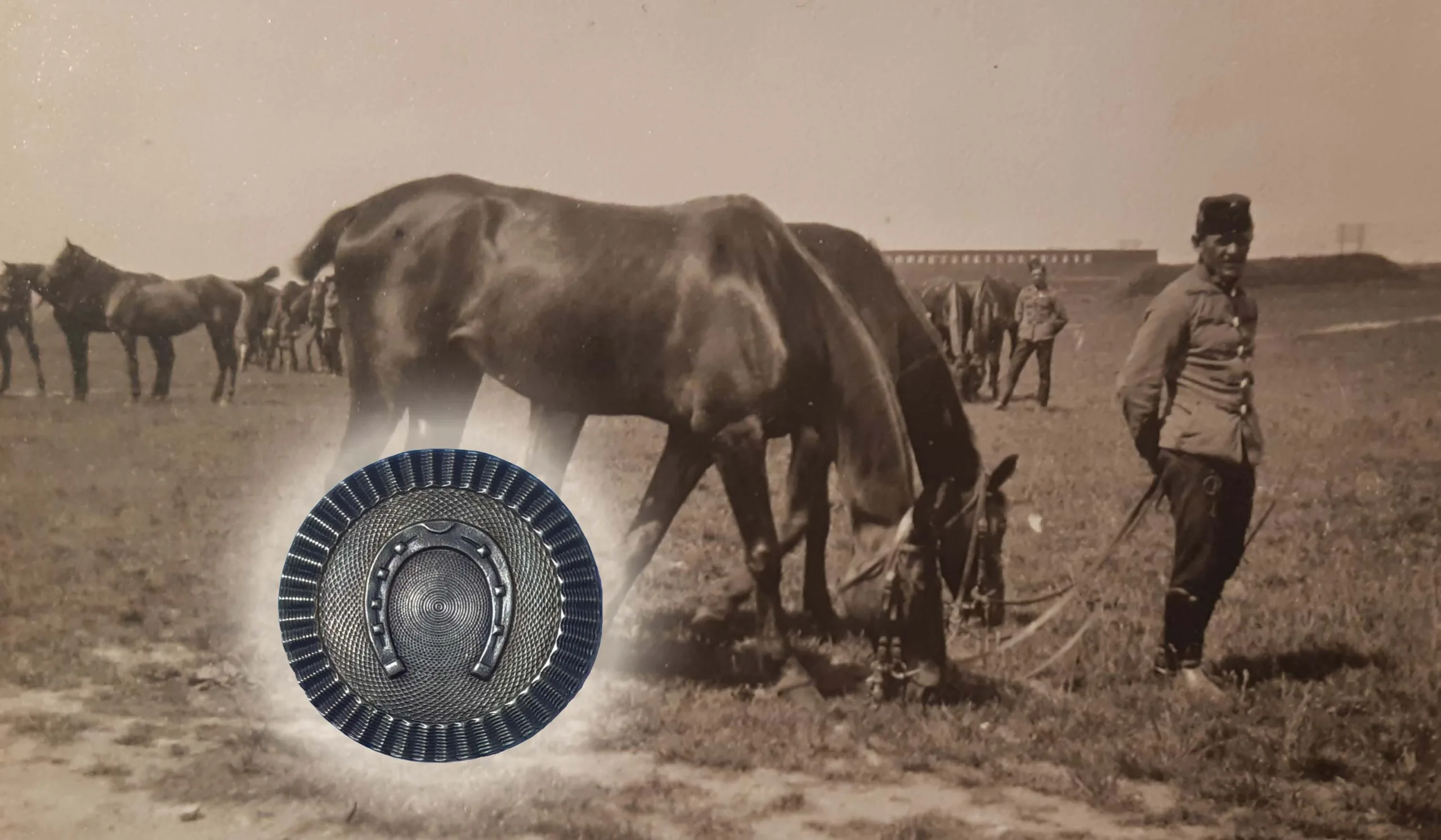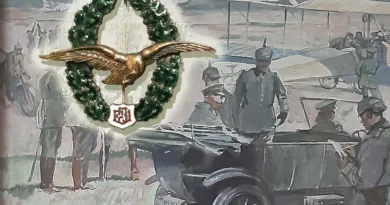Farriers’ badge
Since the beginning of time, humans have been trying to put the power, skill and other useful abilities of animals into their own service. Warfare was no exception. In various armed conflicts, heavy loads were moved with the help of tow animals (e.g. bulls, buffaloes). Donkeys, mules, horses were used to help with the lighter loads. The dogs provided assistance in guarding and tracking. Pigeons and ravens bridged the long distances in communications. And with the help of horses (camels and elephants in exotic environments), the movement in the field was more speedy. Prior to the great mechanization, both the economy and the armed force would have been unthinkable without millions of horses.

In the second half of the 19th century, veterinarians appeared in the armed forces of the Monarchy. To cure the animals, the staff were provided by doctors and farriers. They served primarily in the cavalry squadrons. From 1871 they were trained in Jászberény for the army corps. The courses were 5 months long, with 40 students per course. Later, the course was relocated to the Pest Animal Hospital without staff limit. The aim was to get 1-1 qualified master to each cavalry squadron. The soldiers who performed excellently in the course were sent to the Veterinary College for two years of farrier training. Students who successfully completed the course were given a buck sergeant rank. Some of them also received sergeant promotions. In the 1890s, three soldiers from the Hussar regiments and two blacksmith-trained soldiers from the infantry forces per unit were deployed to the vocational course of the Central Riding School. In 1908, after a major reorganization, the farrier masters were classified in classes 1 and 2 while retaining their previous ranks. Candidates for the course were given a corporal rank. The position of first- and second-class masters was created, which included higher-ranking petty officers. They received a higher monthly fee. The Industry Act stated that professional soldiers in special professional positions were not allowed to practice their learned craft in a civilian context. From 1913, the army’s farrier masters were allowed to carry out such activities out of service in settlements where there was no civilian horseshoe forging.

In March 1917 a very expressive and rustic award was established to distinguish skillful farriers. It was made of tombak or red cast. A round badge with a diameter of 440-450 mm and a ribbed raised rim of 110-120 mm thickness. The ribs were cut by concentric circles. This had the effect on the rim moving and undulating. In the middle, a horseshoe was depicted facing downwards with its stems. It had four horseshoe pins in its left stem and three horseshoe pins in its right stem. A scaly pattern was engraved against the background of the center. Concentric circles can be seen between the stems of the horseshoe. A fastening tab that resembled the letter Ω was soldered to the back of the badge.The tab could be hooked into a piece of material forming a loop above the upper right pocket of the field jacket.

The medal was awarded to farriers who were “excellent and reliable at practical horseshoeing”. The medal was awarded by the commander on the recommendation of the subdivision commander.




